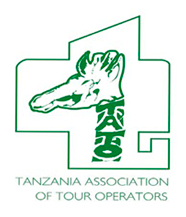Linguistic and Cultural Roots
The Hadzabe (sing. Hadza) are semi-nomadic hunter-gatherers located in northern Tanzania around Lake Eyasi. Linguistically, they speak with many “clicks” that are characteristic of languages throughout southern Africa, such as that of the Kalahari bushmen, and are loosely classified as Khoisan languages. Linguistically and culturally they are members of the ‘Khoi’ (person) and ‘San’ (foragers) groups. In Tanzania, the Hadza people form close affinities with the Sandawe people who have cultural connections with the San or KhoeKhoe hunter-gatherers communities of the Southern Africa. Hadzabe men are polygamists and the Hadza social system is mainly patriarchal. Women are adorned with traditional pieces of skin known locally as ‘Hangweda’ formerly used by ‘Barbeig’.
Location and Natural Habitat
The Hadzabe traditional territory of approximately 930 square miles occupied the game-rich savannas. In recent years they have been squeezed into the area around Lake Eyasi that is just south of the Serengeti. Their lands are full of baobab and other bush trees which provide their substance livelihood.They are skillful hunters and their knowledge of plants, tubers, fruits and wild animals is extensive.
The Hadzabe Hunting and Gathering Way of Life
Hadza division of labor is split between hunting and foraging. Although foraging is primarily done by women and hunting by men both genders are often active participants in hunting and foraging. It is not uncommon for women to bring back small game from time to time and most foraging parties are conducted with at least one male present.
The Hadza diet consists of honey, fruit (mostly baobab), tubers, and meat from a variety of game such as dikers, baboons, and bush-pigs. The choice foods vary dependent on seasonal abundance and opportunity. Foraging tools include: a digging stick, a large storage pouch made from animal hide which is used to carry smaller objects, a knife, and a variety of clothing items. Hunting tools include: a bow with arrows, a small container for collecting honey, a three piece fire starter, and a variety of clothing items.
Concerns About Hadzabe Physical Cultural Continuity
Currently, the Hadzabe numbers have shrunk to around 800-1,000 individuals and are one of the last hunter-gather bushmen ethnic groups left in the world. They are ardent traditionalists though the government continues to pressurize them to abandon their hunting and gathering lifestyle. Several sedentary programs were established to lure them into permanent villages and agriculture. They have no distinguishable leaders. This poses a potential problem for their physical and cultural continuity. They are losing their customary land territories to pastoralists (Barbaig) and agriculturalists (Iraqw) neighbors. They also face constant invasion from commercial and recreational hunters and agriculturalists in their meager territory.






